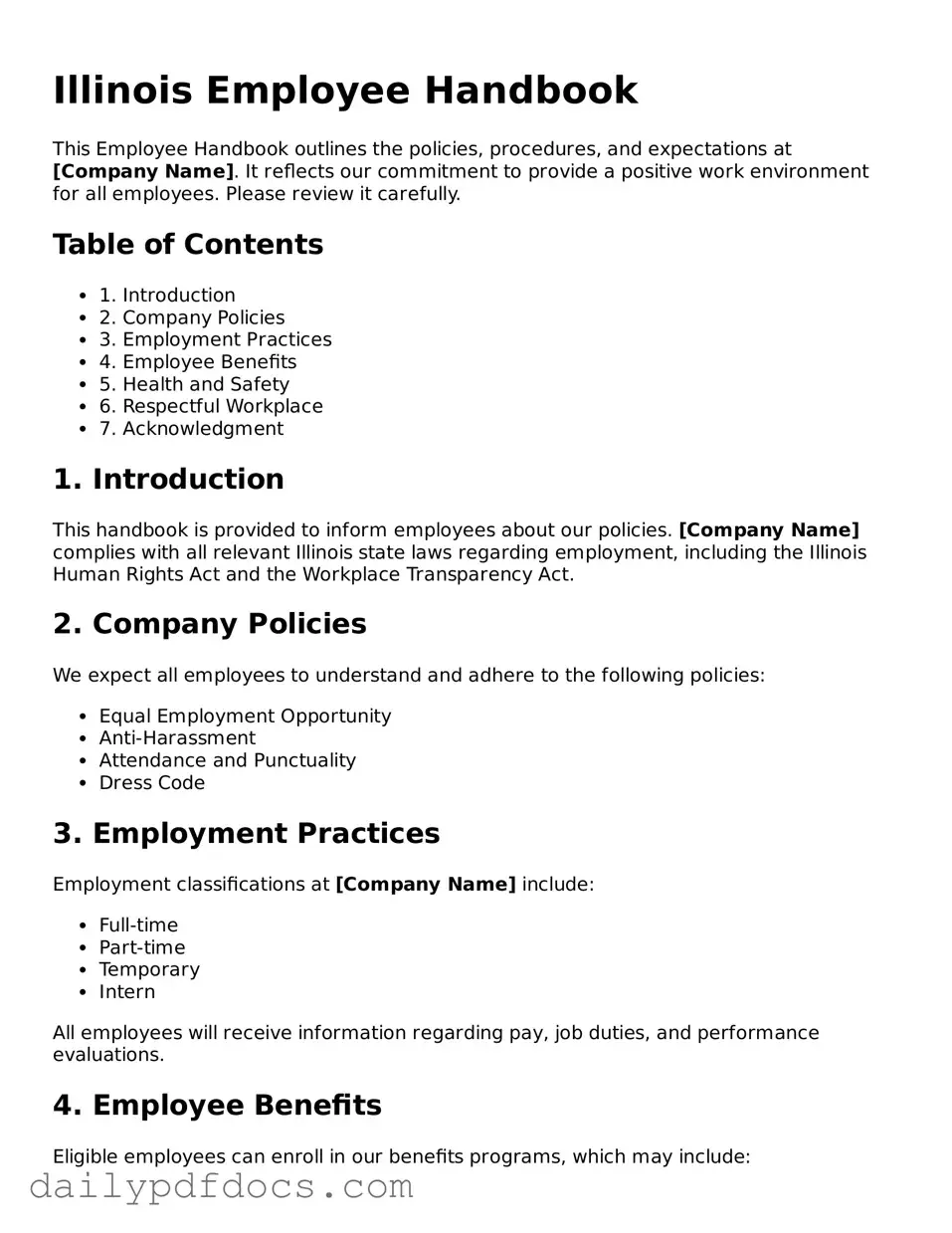What is the Illinois Employee Handbook form?
The Illinois Employee Handbook form is a document that provides important information about workplace policies, employee rights, and company expectations. It serves as a guide for employees, helping them understand their roles and responsibilities within the organization. This form can be customized to reflect the specific policies of each employer in Illinois.
Why is it important to have an Employee Handbook?
An Employee Handbook is crucial for both employers and employees. For employers, it establishes clear policies and procedures, reducing the risk of misunderstandings and legal disputes. For employees, it offers clarity on what is expected of them and outlines their rights. This transparency fosters a positive work environment and promotes compliance with labor laws.
Who should receive a copy of the Employee Handbook?
Every employee should receive a copy of the Employee Handbook upon hire. It’s also beneficial to provide updates whenever there are changes to policies. Employers should ensure that all employees, including part-time and temporary workers, have access to this important document.
What should be included in the Employee Handbook?
The Employee Handbook should include sections on workplace policies, employee benefits, code of conduct, anti-discrimination policies, and procedures for reporting grievances. It may also cover topics like attendance, dress code, and safety protocols. Customizing the handbook to reflect the specific culture and needs of the organization is essential.
How often should the Employee Handbook be updated?
It is advisable to review and update the Employee Handbook at least once a year or whenever there are significant changes in laws or company policies. Keeping the handbook current ensures that employees are aware of their rights and responsibilities, as well as any new policies that may affect them.
Is it necessary to have employees sign an acknowledgment of the Employee Handbook?
Yes, having employees sign an acknowledgment form is a good practice. This signature indicates that they have received, read, and understood the Employee Handbook. It can serve as evidence that the employer has communicated policies effectively, which can be important in case of disputes.
What should an employer do if an employee violates a policy outlined in the Employee Handbook?
If an employee violates a policy, the employer should follow the procedures outlined in the Employee Handbook for disciplinary actions. This may include verbal warnings, written warnings, or more severe consequences depending on the nature of the violation. Consistency in enforcing policies is key to maintaining fairness and integrity in the workplace.
